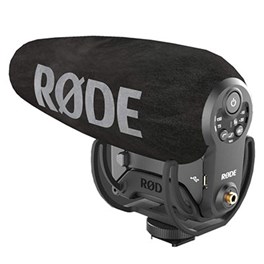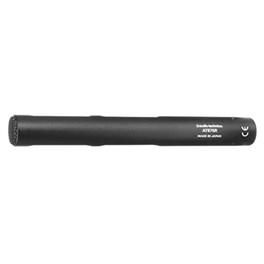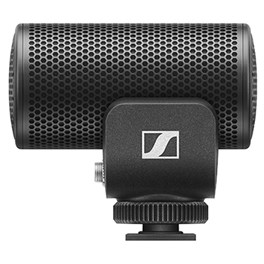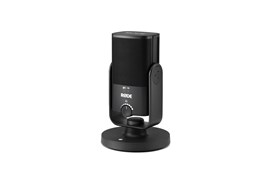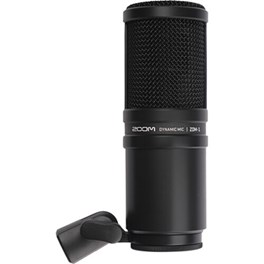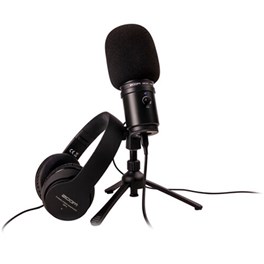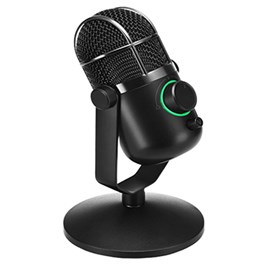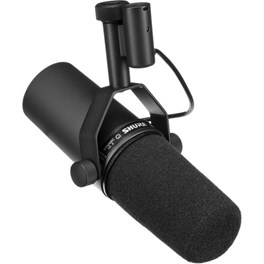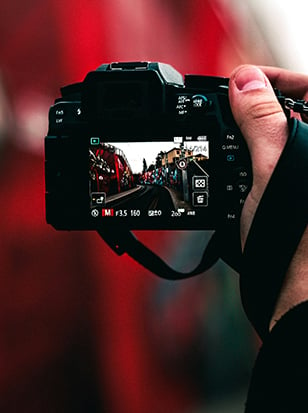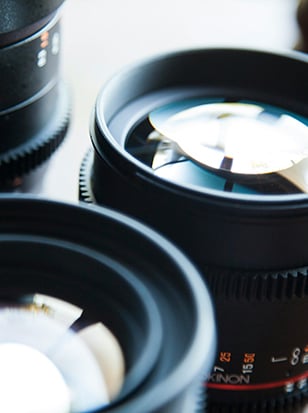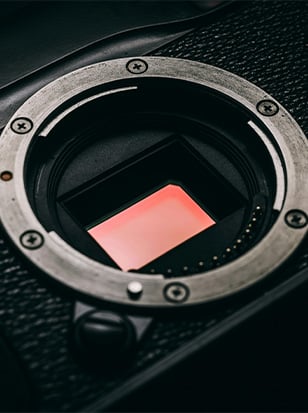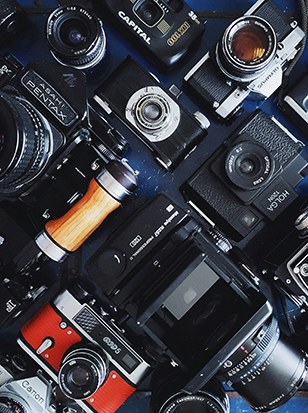
How do microphones work? For those who aren’t in the industry, microphones - how they work and which type is best - are somewhat of a minefield. It’s an interesting topic that is shrouded in personal opinions and corner-cutting. But to really understand where to start, it’s best to learn how things work and for you to think about what you’re going to use a microphone for.
Below, here are the categories we’ve used to divide up our best microphones guide, to help make it easier for you to find the right mic for your needs:
Condenser microphones - Condenser microphones offer superior sound quality, and are especially suited to recording vocals and high-frequency sounds (see the category below for a full explanation). They’re often favoured as studio mics for this reason.
Streaming microphones - Planning to stream video games or other content? The best streaming microphones will make your voice clear as a bell, with easy plug-and-play setup that’s straightforward even for those who have never used audio gear before.
Dynamic microphones - Dynamic microphones use electromagnetism to convert sound waves to electrical signals. They’re not as sensitive as condenser mics, but they tend to be more portable, more hard-wearing and easier to use. Also, if you’re going to be recording in noisy environments, a dynamic mic will probably pic up less of the unwanted background noise.
Podcasting microphones - Audio quality is of paramount importance in podcasting – nothing will turn off new listeners faster than muddy, indistinct voices. These are the mics that are perfect for group or solo podcast recording.
Studio microphones - If you’re crafting a recording studio setup and want a capable microphone to capture audio in pristine quality, these are the ones we’d recommend.
One thing we should point out before we kick off is that there’s a fair amount of crossover between these categories. Plenty of the best streaming microphones are also good for podcasting, and both dynamic and condenser microphones can be great for all sorts of different uses. These categories are included to help you, but they’re not absolute rules, so don’t worry too much about comparing mics from multiple categories. We’ll explain the strengths and weaknesses of each one as we go.
So, let’s get into it, and count off the best microphones you can buy in 2024.
Best Condenser Microphones
Condenser microphones deliver pristine sound quality above all else. Also known as “capacitor microphones”, condenser mics work via two plates placed in close proximity to one another. One of these plates is constructed of very thin metal – this is known as the diaphragm, or sometimes the membrane. And when we say very thin, we do mean it – in high-quality microphones, the thickness of the membrane can be as little as a few microns.
When sound waves hit the diaphragm, the distance between it and the other metal plate will fluctuate. The variations in distance will mirror the shape of the sound waves, allowing the microphone to convert the sound waves into an electrical signal, which in turn translates to listenable audio.
Condenser mics are extremely accurate, especially when recording high frequencies and voices. They’ll pick up absolutely everything that’s going on in their field, which can be an issue in noisy environments, but makes them especially ideal for studio use.
Pros:
- Broadcast-level audio quality
- Multiple battery options and power-saving features
- Versatile digital switching modes
Cons:
- Not as tough as other mics
Widely regarded as one of the best on-camera shotgun mics you can buy, the Rode VideoMic Pro+ is an exceptional tool for recording high-quality audio on the go. It’s a condenser mic that slides onto the hotshoe of a DSLR or mirrorless camera, and as a true condenser mic, it covers a wide frequency range of 20Hz to 20KHz. This means your low ends will be deep and full, while your high ends will be sharp and crisp. It’s a mic for coping with just about any audio situation.
Rode has also clearly reworked the design of the mic with portability and on-the-go use in mind – particularly with regard to its battery. The VideoMic Pro+ runs off an included RODE LB-1 Li-Ion rechargeable battery, but can also run on standard AA batteries if needed, or be powered via USB. This suite of options ensures that you can take steps to ensure you never run out of power when you need it the most.
Pros:
- Rich, clear sound quality
- Excellent off-axis audio rejection
- Small and lightweight
Cons:
- No battery (requires phantom power)
The short, lightweight Audio-Technica AT875R may look a little simple at first glance. However, this is a highly capable condenser shotgun microphone that can be mounted on cameras and stands with ease, and provides excellent sound quality that’s good enough for TV and film shoots.
The off-axis audio rejection of the Audio-Technica AT875R is particularly good – this is in part thanks to its supercardioid polar pattern and interference tube, which are designed to reject lateral sounds. In layman’s terms, the mic is great for recording what you point it at, and discarding the surrounding noise. It also comes with a practical foam windscreen for reducing ambient noise from wind, air conditioners etc. One thing to be aware of though is that the Audio-Technica AT875R does not have batteries, and requires phantom power to operate. This can be provided using a microphone pre-amp or an external power supply.
Pros:
- Works great with cameras and smartphones
- Excellent directional audio quality
- Integrated noise reduction
Cons:
- No physical gain control button
More and more creators are using high-end smartphones to shoot stunning video content. However, while the visual quality of smartphone cameras has skyrocketed, the same can’t quite be said for the audio quality of the built-in mics. The Sennheiser MKE 200 is one of quite a few mics released to plug this gap – working well with both smartphones and traditional cameras, it’s a directional condenser mic delivering a frequency response of 40Hz to 2KHz.
The MKE 200 doesn’t need batteries – just plug it in and you’re ready to go. It has a built-in windscreen to reduce wind noise, as well as a shock mount that’s designed to minimise handling noise – the bumps and knocks you get when the person holding a mic moves or makes an adjustment. It’s quite a simple mic design, lacking a few physical controls – there’s no on-mic gain control, for instance – but it’s an impressive little plug-and-play unit that’s particularly good for vloggers.
Best Streaming Microphones
If you’re planning on streaming games or other content, you don’t want to be relying on the built-in mic of your computer or laptop. You’ll be much better served by picking up a dedicated streaming microphone – and don’t worry, this doesn’t have to be expensive. Many of the best streaming microphones are simple devices that are easy on the wallet. What’s more, they’re often plug-and-play devices that work via USB, meaning even a total audio novice can easily get one set up and working.
Having a solid streaming mic will make a world of difference to the quality of your streams. Many are unidirectional, meaning you can point them towards where you’ll be sitting and speaking and they’ll pick up audio from that direction while blocking out everything else. Plus, as streaming tends to be an indoor activity, you don’t need to worry too much about weatherproofing or battery life.
Pros:
- Tiny and unobtrusive
- Excellent, clear audio quality
- Built-in pop filter
Cons:
- Fixed pattern
- No on-mic gain control
As the name implies, the Rode NT-USB Mini is a tiny little streaming mic that plugs in via – you guessed it – USB. Though if you were worried that having such a small mic would have an impact on audio quality, let us lay those fears to rest – the Rode NT-USB Mini delivers excellent sound, with a high-quality condenser capsule that captures exceptional clarity. There’s also a built-in pop filter to control for the plosive sounds in human speech – meaning you shouldn’t get unpleasant pops on your “P”s and “B”s.
The magnetic desk stand of the Rode NT-USB Mini serves two purposes – keeping the mic in one place, and reducing any unwanted sounds caused by it moving around. The Rode NT-USB Mini is a pretty straightforward device, meaning there’s no on-mic gain button, and its fixed cardioid pattern that’s optimised for vocals can’t be changed. However, mic needs for most streamers are going to be the same week-in, week-out, and the Rode NT-USB Mini excels at doing one job very well.
Pros:
- Genuinely useful app
- Excellent high-frequency response
- Broad system compatibility
Cons:
- Single cardioid recording pattern
For streamers who want a high-quality audio setup, the Shure MV7 Dynamic Microphone is an ideal choice. Its broad compatibility means it’s going to be suitable for pretty much any streaming setup – it’ll work with PCs and Apple devices, as well as smartphones, hard disk recorders and audio interfaces. We also have to give a shout-out to the ShurePlus MOTIV app – while companion apps for devices can often fill users with a feeling of dread, this one is genuinely useful, especially if you’re a novice user who wants some guidance through the settings.
Such users will likely stick with the auto mode, which does everything a streamer is realistically going to need, automatically tweaking settings for optimal sound quality in every situation. Audio quality itself is excellent, with a built-in pop filter, and the single cardioid recording pattern, while limited in some senses, should be perfectly fine for streaming setups.
Best Dynamic Microphones
Dynamic microphones work using electromagnetism to convert sound waves to electrical signals. Some of the first microphones ever made were dynamic microphones, and it’s a design that has well and truly stood the test of time. Dynamic mics work using a diaphragm that is attached to a metal coil (or sometimes an aluminium ribbon), suspended between magnets. When sound waves hit the diaphragm, both it and the coil will move – this causes electromagnetic fluctuations that mirror the sound waves.
Dynamic microphones aren’t as sensitive as condenser mics, as the coil requires stronger vibrations in order to appreciably move. However, this doesn’t necessarily make them inferior – it just means they’re useful for different applications. For instance, dynamic microphones are much better at coping with extremely loud sounds, meaning they’re the choice for recording gigs and concerts. They also tend to be more affordable and more hard-wearing, meaning run-and-gun video shooters may find a lot to like about them.
Pros:
- Excellent value for money
- Robust construction
- Unidirectional pattern reduces feedback
Cons:
- No on/off switch
Tascam is something of an institution in the audio recording world, having pioneered the concept of the home studio with its Portastudio – made famous when Bruce Springsteen recorded the entirety of his acoustic 1982 album Nebraska on the device. The Tascam TM-82 is a simpler affair, but retains that democratising spirit of accessibility in its affordability – there are few good-quality dynamic microphones available at this price.
With its unidirectional cardioid polar pattern, the TM-82 is great for recording vocals or instruments while tuning out background noise. It’s constructed from metal (it’s heavier than you’d expect from a mic at this price) and its frequency response runs from 50Hz to 16KHz. If you’re setting up a home studio for vocals, guitars, drums or most other instruments, the Tascam TM-82 is an inexpensive dynamic microphone that’s well worth considering.
Zoom ZDM-1 Dynamic Large Diaphragm Microphone
The Zoom ZDM-1 is a carefully constructed Dynamic Microphone offering impressively high sound pressure levels so you can bash away at your symbols without fear of distortion. Featuring an internal shock mount that protects the capsule from bumps and a built-in humbucking circuit that rejects electromagnetic interference, this microphone is the perfect recording companion for when things get noisy.
£53.00 View
Pros:
- Copes well when things get loud
- Built-in humbucking circuit
- Durable all-metal body
Cons:
- Included stand somewhat rudimentary
One of the strengths of dynamic microphones is their ability to handle high-volume sounds without distorting or clipping. The Zoom ZDM-1 Dynamic Large Diaphragm Microphone is one such mic, and if you’re a drummer looking for an affordable way to record crashing cymbals and cracking snares, it’s a great starting point. With an all-metal construction that includes a durable grille, the Zoom ZDM-1 is built for daily use.
This isn’t just a mic for recording gut-busting solos – its super cardioid polar pattern provides excellent isolation, making it a solid choice for speech recording such as podcasting. It has an internal shock mount to prevent handling noise from encroaching on the recording, and also boasts a built-in humbucking circuit, which rejects the kind of electromagnetic interference that can be caused by power lines, computer monitors and mobile phones. The 50 Hz to 18KHz frequency response also makes it great for recording lows and highs alike.
Best Podcasting Microphones
A good podcasting microphone does not need to be terribly complicated, but it does need to offer high enough audio quality to satisfy today’s discerning podcast listener. There are a lot of podcasts out there, and if yours is filled with plosive pops and audio that clips every time someone raises their voice, listeners aren’t likely to stick around for long.
It makes sense for podcasters to use a USB microphone, as you’ll likely have a computer running anyway during the recording, and will want the audio there as soon as possible for editing and sharing. With a good podcast microphone, you should be able to place it between your participants and have everyone picked up in good quality. A mic per person would be better of course, but not everyone has the budget for it, so we’ve picked out a couple of versatile mics that will give you everything you need to get set up and start podcasting.
Pros:
- Condenser-mic quality
- Headphones included
- Useful foam windscreen
Cons:
- Headphones quite plasticky
This Zoom ZUM-2 USB kit is designed to give you everything you need for podcasting from the moment you open the box. This means that as well as the mic itself, you also get a tabletop tripod and a handy pair of dynamic stereo closed-cup headphones, meaning you can get started right away.
The mic may have a plug-and-play setup, but its super-cardioid polar pattern does a great job of capturing pristine vocal audio, reducing background noise for a consistently clean recording. The included foam windscreen helps reduce plosive pops and other unwanted noises, and the 2m USB cable gives you plenty of flexibility and means you aren’t too tethered to a computer. The mic is relatively lightweight too, and the aforementioned tripod means it’s easy to set up anywhere – useful if your podcasting isn’t confined to a single location.
Pros:
- Omnidirectional polar pattern
- Wide frequency range
- No-fuss, plug-and-play operation
Cons:
- No headphones in the box
Many of the mics we’ve featured on this list offer only one polar pattern. However, the Thronmax Mdrill Dome Plus USB Microphone gives users the option to choose either a cardioid unidirectional polar pattern, or an omnidirectional pattern. The former isolates audio from a specific direction, which is great for picking up a single person’s speech. The latter captures sound from all directions, allowing for high-quality recording of conversations featuring multiple participants. If this describes your podcast, and you don’t have the budget for multiple mics, the Thronmax Mdrill Dome Plus is an excellent choice of do-it-all mic.
Like many good podcasting mics, the Thronmax Mdrill Dome Plus is easy to set up, with a plug-and-play USB interface. It supports headphones via a 3.5mm jack (though not Bluetooth), meaning you can monitor your audio as you record. Its 96KHz frequency range means it meets the standard demanded by the professional podcast industry.
Best Studio Microphones
Studio microphones are just what they sound like – mics that are designed to work best in a controlled studio environment. Throughout this guide, we’ve often discussed features like portability and external noise reduction when selecting mics – however, if you’re only going to be using your mic in the studio, such factors aren’t really a concern. This leaves you free to focus on mics that deliver one thing above all else – top-notch audio quality.
As such, condenser mics tend to make for great studio mics, and ideally you want one with a large diaphragm for a stronger signal. You may just be recording voices, or you may have musical aspirations in mind – either way, a good studio mic should be able to handle it all without difficulty. We’ve picked out a couple of excellent studio mic options for this last section of our guide – they’re sold as kits, meaning you should have everything you need to get started.
Pros:
- Absolutely superb vocal performance
- Effective rejection of electromagnetic hum
- Solidly built
Cons:
- Not many we can think of!
The Shure SM7B has an enviable reputation in the audio tech-geek community. It’s often regarded as one of the best studio mics you can buy without spending the top-most price, and once you’ve heard your own voice through this mic, you’ll probably understand why. The vocal quality on this thing is freakishly good – if you’re in a controlled environment like a studio, you’ll be absolutely wowed by the quality. Clarity is pitch-perfect, and there’s also plenty of oomph in the low-end to add a little body and warmth. Seriously good stuff.
The off-axis rejection on the Shure SM7B is also first-class, making it a good choice for podcasters. It can actively shield itself from interference stemming from electronic devices, ensuring that nothing interferes with your recording. The built-in pop filter and shock mount also work reliably well, eliminating the need to pick up extra accessories, and making this a comprehensively well-featured complete package for the studio.
Pros:
- Exceptional sound quality with low noise
- Integrated shock mount and pop shield
- Premium metallic build
Cons:
- Very few cons worth mentioning
A classic condenser mic for studio use, the Rode NT1 brings premium audio quality to your home studio. With its large 1-inch diaphragm, the NT1 captures a broad range of frequencies – vocals are crisp, sharp and detailed, with a satisfying low end, and noise is virtually non-existent. Rode has claimed this to be the quietest 1-inch cardioid condenser mic ever made, and it’s hard to find much fault with that claim. The integrated shock mount protects against handling noise, and there’s a pop shield for handling all those pesky plosive sounds.
While it might not quite be suitable for recording clattering drums or other loud sounds, the Rode NT1 handles vocals like a dream, and will also be highly capable for quieter instruments like guitars or keyboards. It is keenly priced, too, providing tremendous value for money for anyone looking to set up a home studio. The included AI-1 audio interface connects to a computer via USB, making it easy to get up and running.

FAQs
Can I use a microphone on my iPhone?
No, not really. The microphones on smartphones are usually small, poor-quality, omnidirectional mics that are stuffed inside the phone along with all the other components. Sure, they’re fine for phone calls and if it was your only option for an on-the-fly interview, it is fine. But the audio quality is poor and a dedicated microphone will always be preferable.
Can I use any microphone?
Technically, yes! But should you? Perhaps not. As discussed, there are many types of microphones that are optimised for different uses e.g. condensers for singers or lapel mics for interviews.
Are camera microphones good enough for recording?
Modern cameras have much better microphones than earlier models and as such, they can capture better audio quality. However, a dedicated microphone will always provide more accurate audio.
What is best for video recording?
Many modern cameras will have a microphone input that allows you to use small on-camera mics for audio capture. Alternatively, you can record audio separately and sync up the audio to video in post-production. Either will offer better results than the in-built microphone on your camera.
Do I need a license for a wireless microphone?
Most users will not need a license. However, there are some professional applications where you will require a license and you learn more about that here.
How do we decide?
Our in-house photography experts, store staff and partners all work collaboratively to pour over our guides and tips articles. We also consider emerging trends and customer feedback to make sure our guides are always up-to-date and reflective of what people are truly looking for. By curating only the best products, our guides provide trustworthy recommendations, making it easier for customers to make informed choices with confidence.
If you would like more advice on any purchase our contact centre staff are here to help. Alternatively, you can reach us via email or social media. And don't forget. If you were to purchase anything based on our recommendations you'll be covered by our full returns policy
